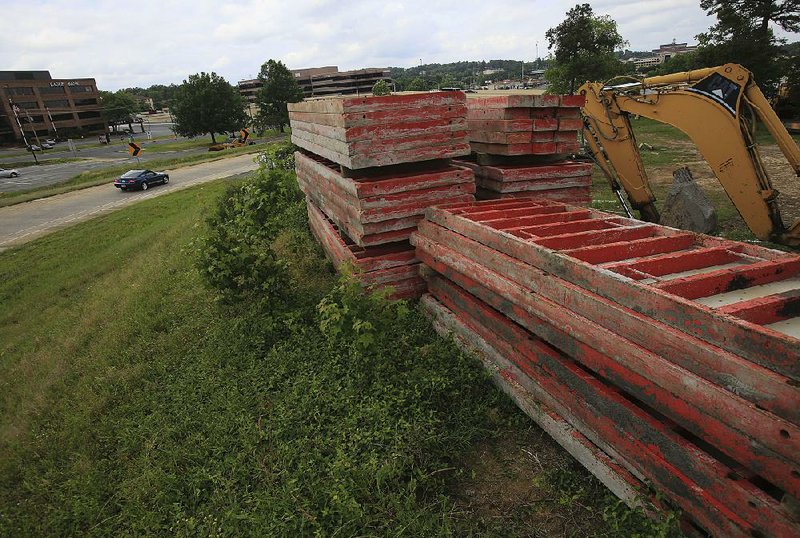The $125 million project to relieve congestion through the Interstate 430/Interstate 630 interchange in west Little Rock has included tons of concrete and steel to build the flyovers and other components.
It includes a few bags of grass seed, too. And that grass seed must be within state Department of Highway and Transportation Department specifications.
For example: Unhulled common Bermuda grass is allowed, but its use is limited to five pounds per acre. The hulled variety, however, can be seeded at 10 pounds per acre.
The precise details remain to be worked out, but the contractor will have to reseed any grassy areas in and around the interchange that the contractor disturbed, said Mark Headley, the district engineer for District 6 for the Arkansas Highway and Transportation Department.
Headley oversees department operations and construction in Garland, Hot Spring, Lonoke, Prairie, Pulaski and Saline counties.
And the contract isn't completed until the grass is growing, be it hulled or unhulled Bermuda or another variety allowed under the specs.
"We make sure it grows," Headley said. "We won't release [the contractor] from the contract until then."
The contract with Weaver-Bailey Contractors of El Paso in White County doesn't contain any special provisions with respect to the seeding, which means the contractor will be guided by the Arkansas 2003 Standard Specification for Highway Construction.
The 2003 specs have been replaced by a 2014 update, but Headley said the contractor will have to follow the specifications for seeding in place at the time the contract was awarded. The first contract was awarded in 2009.
The department expects it could schedule a ribbon-cutting some time next month when the last flyover -- from I-630 west to I-430 south -- opens, agency spokesman Danny Straessle said. A flyover taking traffic from I-430 south to I-630 east will open before that, he said.
Damage to what were once grassy areas is noticeable in and around the old cloverleaf ramps and near the commuter parking lot at I-630 and South Shackleford Road.
Straessle said there is no provision or line item in the contract to specifically address the repairs, but rather it is an understanding between the contractor and the department.
"It just has to be restored to its prior conditions," he said.
The contractor already has done some landscaping, according to Headley. The project uncovered a distinctive rock formation weighing roughly 5 million pounds in the interchange's southeast quadrant between Baptist Health Medical Center and I-430, prompting Headley and other highway officials to dub the interchange the Big Rock Interchange.
The slope surrounding the rock was seeded "the normal way, but it didn't take," Headley said, not conceding that whoever came up with the specs may not have had a "green thumb."
"We didn't think it would work, but we did it anyway," he said.
A special grass mix was developed for the slope and that did take. It included some sweet gum and pine seeds, Headley said.
The work, including the seeding, all is part of a six-year project to ease congestion through the interchange for the 200,000 vehicles that use it daily and for the 300,000 vehicles that planners estimate will be using it in 20 years.
Weaver-Bailey began the first phase in January 2009 with a $17.3 million contract that included construction of an additional lane for motorists traveling from I-630 west to I-430 north and relocating the route motorists use to go from I-430 south to Financial Centre Parkway west.
It also added new traffic signals and made intersection improvements at Shackleford and Hermitage roads and at Financial Centre and Hermitage.
An $18 million project that began in July 2009 mainly involved modifications for future improvements, with the most significant aspect being removal and reconstruction of the I-430 bridge over I-630.
Planning for the entire project began in 2005 -- 30 years after I-430 opened and 18 years after the interchange opened -- when Bridgefarmer and Associates of Dallas was hired to study the interchange and make recommendations.
The final design includes several flyover ramps between the two interstates -- to replace the existing loops -- and the ramp over Shackleford, which became fully operational early this month.
Metro on 05/26/2015
